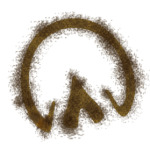I hope that you have been enjoying the fresh weather breezing in throughout the month of October lately! My favorite gal pal HugMe Christi and I enjoy a brisk morning romp in our field and then graze leisurely while soaking up the warm sun rays during the day. Do you know why fall is the best time of the year? Not only do we get to roll around in all of the leaf piles, but because it smells like a tasty vegetarian Thanksgiving feast for horses! Every day, the air becomes a little more aromatic with the sweet smell of turning leaves and sweet grasses. It’s like an olfactory sensory explosion, and I really just can’t get enough of it! It is almost as tantalizing as an apple-filled doughnut sitting on the picnic table outside my pasture. Almost.
Colorful leaves may be eye candy to you, but some are downright toxic for horses! Not much research has been conducted on the maximum consumption quantity which will cause problems for your horse. Ultimately, the best course of action is to thoroughly check your farm for poisonous plants and treat accordingly. One pretty ornamental tree is small and burgundy. Its leaves have three points and serrated edges. This is the Red Maple and it is very toxic to horses along with Black Walnut tree bark and wood, all types of Cherry trees, Chestnut and Buckeye trees, and shrubs like Boxwoods and the Carolina Sweet.
Toxicity is contained within the leaves, which causes problems because that is the part that horses are most attracted to due to its high sugar content. This sugar build up provides a sweet snack, and we all know that most horses (like me!) are always looking for a tasty treat after a workout or lesson. But keep in mind, too much of a good thing, or even a little of a bad thing, can cause big problems for us.
Another bite sized bane is the acorn that falls from towering Oak trees. Along with the acorns, the young growing leaves contain three primary poisons that mainly affect horses and cattle; deer, on the other hand, love them. If you can’t enlist the help of a herd of deer with the munchies, then I would suggest fencing off the diameter of the tree or providing extra hay and quality forage a long distance away from the tasty Oak temptations.
Poisonous plants are peskier than flies. All it takes is one bite! Take it from the horse’s mouth, literally! Be a trail blazer and check your fields!
For some extra TLC, check out a complete list of poisonous plants that could be lurking in your paddock.
Stay healthy!


